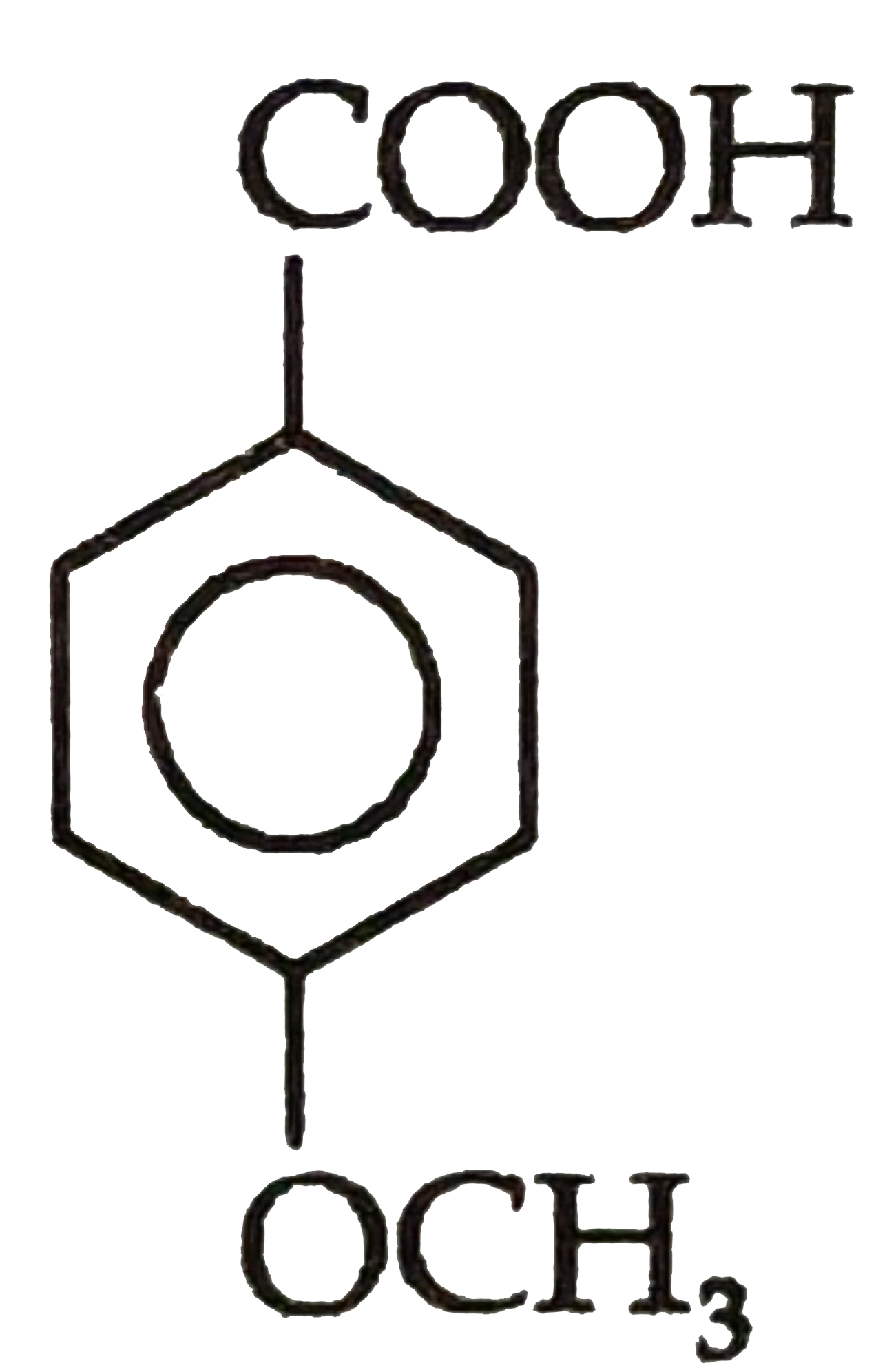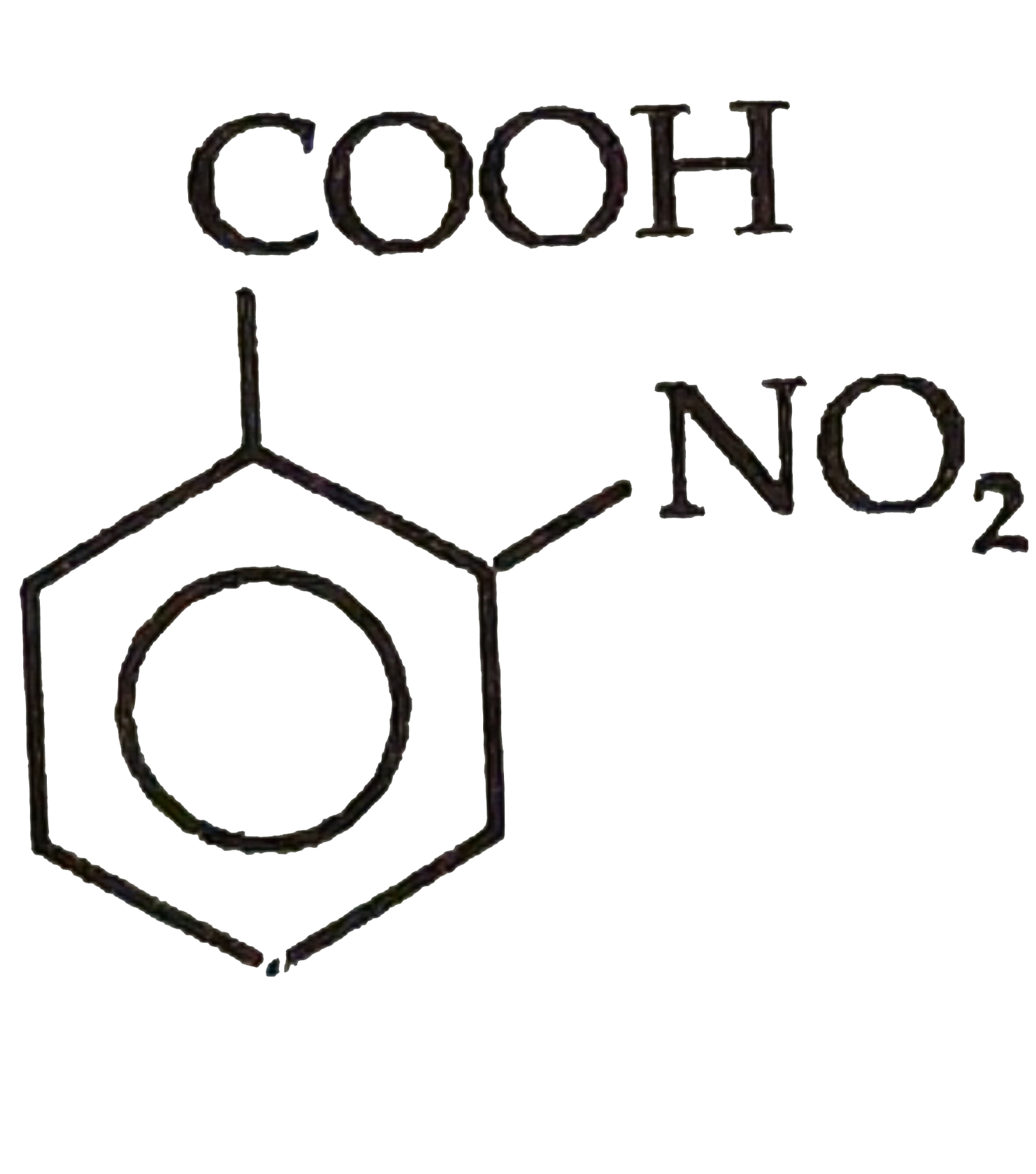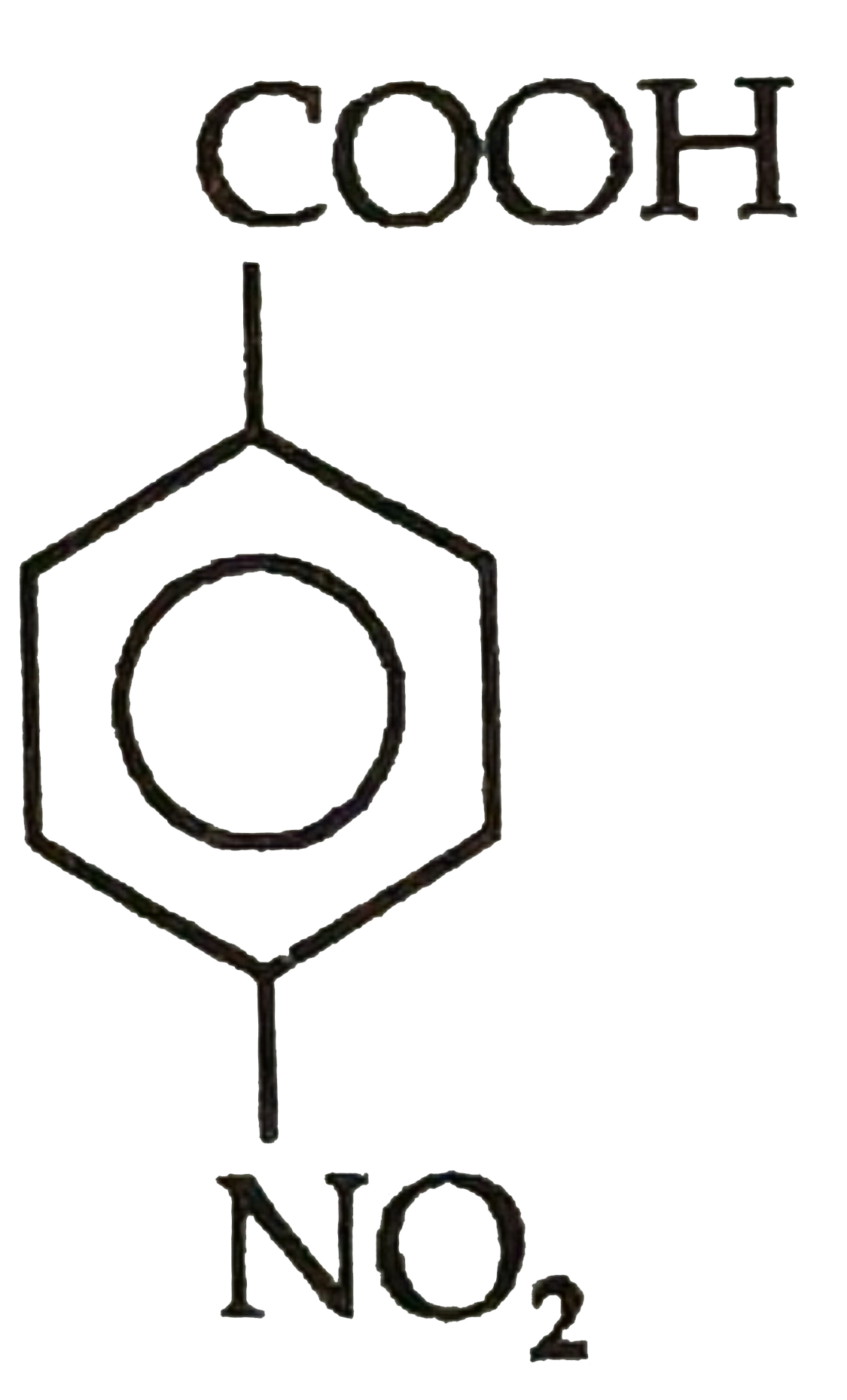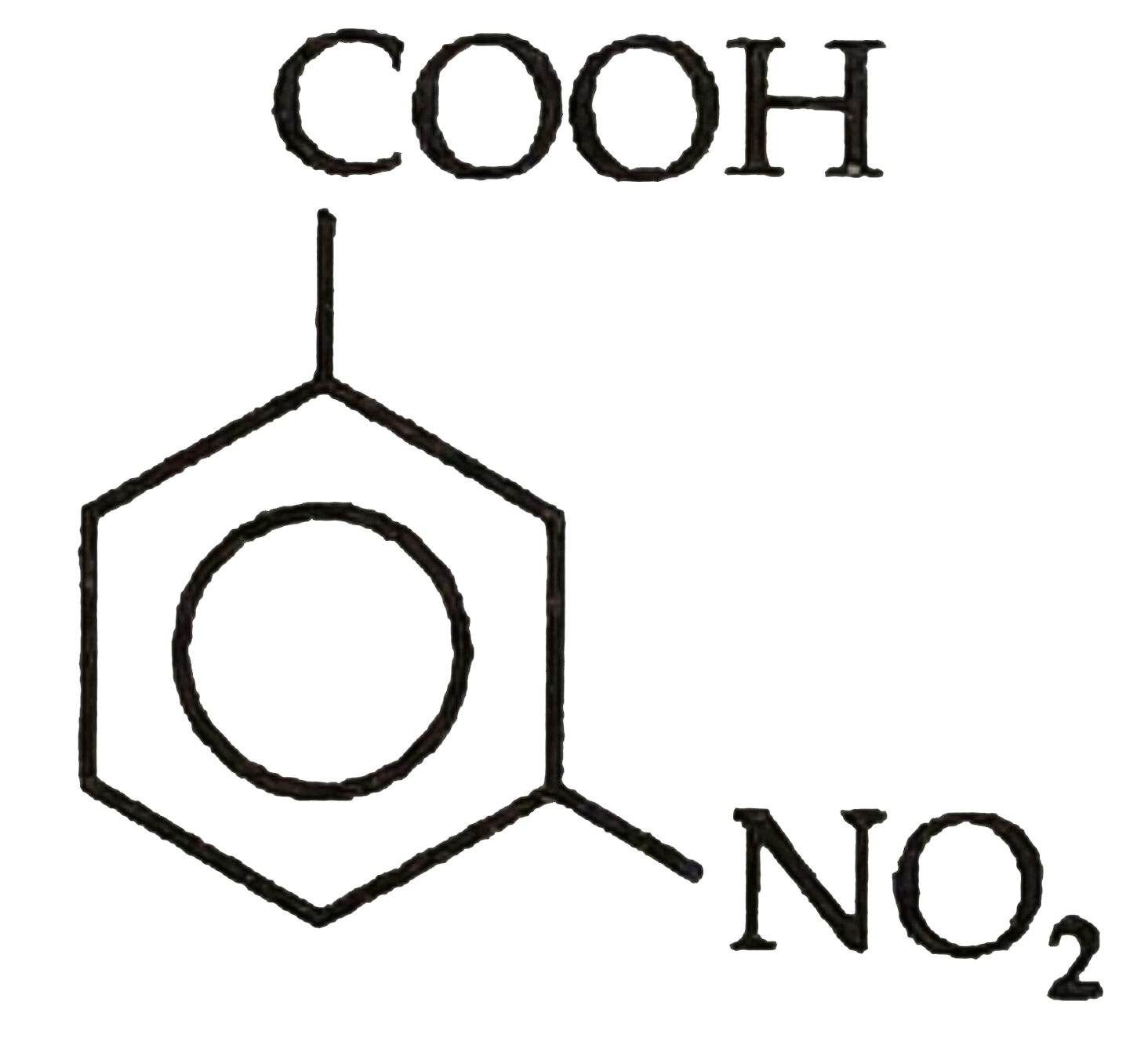Explore topic-wise InterviewSolutions in .
This section includes InterviewSolutions, each offering curated multiple-choice questions to sharpen your knowledge and support exam preparation. Choose a topic below to get started.
| 16401. |
Which one of the following bas largest number of isomers ? |
|
Answer» `[IR(PR_(3))_(2)H(CO)]^(2+)` `underset("cis and trans")([Ru(NH_(3))_(4)Cl_(2)]^(+)),underset("NONE")([Co(NH_(3))_(5)Cl]^(2+))`, `underset("cis and trans")([Ir(PR_(3))_(2)H(CO)]^(2+)),underset("cis and trans and optical isomers")([Co(en)_(2)Cl_(2)]^(+))`. |
|
| 16402. |
Which of the following statements about Fe[(H_(2)O)_(5)NO]^(2-) are correct ? |
|
Answer» O.S of FE is +1 |
|
| 16403. |
Which gives of O_2 on moderate heating is? |
|
Answer» CuO `HgO overset(Delta)to Hg+O` |
|
| 16404. |
What happens when propanaldehyde is reduced by H_2//Ni? |
| Answer» SOLUTION :PROPANOL -1 or n-Propyl ALOCHOL is FORMED. | |
| 16405. |
Which of the following reactions will yield 2, 2-dibromopropane ? |
|
Answer» `CH_(3)CH = CHBR + HBr rarr` <BR>`CH -= CH + 2HBr rarr` |
|
| 16406. |
Two organic compounds (A) and (B) with molecular formula, C_3H_6O , react with HCN in different manner to produce (C) and (D) respectively. One subsequent hydrolysis of (C) and (D)give optically active substances (E) and (F). Both (E) and (F) on decarboxylation give I - propanol . What are (A), (B) , (C) , (D) , (E) and (F) ? |
| Answer» Solution :(A) is `CH_3CH_2CHO, ` (B) is `CH_2=CHCH_2OH,` (C) is `CH_3CH_2CH(OH)CN,`(D) is `CH_3CH(CN)CH_2OH,(E) ` is `CH_3CH_2Ch(OH)COOH` and is (F) is `CH_3(COOH) CH_2OH. ` (E) and (F) are optically active. | |
| 16407. |
Which of the following stsrement is corrent about steel (S) and tungsten carbide (WC)? |
|
Answer» S is a substitutionalsolid while WC is an INTERSTITIAL SOLID solition |
|
| 16408. |
Which metal is ferromagnetic? |
|
Answer» Cr |
|
| 16409. |
Which nucleic acid is responsible for protein synthesis in all cells. |
| Answer» SOLUTION :`MRNA , RRNA , rRNA` | |
| 16410. |
The relationship between DeltaG^(@) of a reaction and its equilibrium constant is |
|
Answer» `-DELTA G^(@)=(RT)/(lnK)` |
|
| 16411. |
Vitamin A is |
|
Answer» ascorbic acid |
|
| 16412. |
Which of the following plant is used for the purification of water |
|
Answer» Biggiata |
|
| 16413. |
Which alcohol reacts with fatty acids to form fats? |
|
Answer» Ethanol |
|
| 16414. |
Which one of the following is chiral? |
|
Answer» `CICH_(2)CH_(2)CH_(2)CH_(2)CH_(3)` |
|
| 16415. |
The volume percentage of N_(2) in air is 78. The Weight percentage of the same |
|
Answer» 75 |
|
| 16416. |
What is coagulation ? Explain the various factors which influence coagulation. |
|
Answer» Solution :Coagulation. The presence of traces of electrolyte is responsible for the stability of colloidal solutions. On the other hand, if a large excess of an electrolyte is added to a colloidal solution, the charge on the dispersed particles is neutralised. Consequently, particles come close together and grow in size as well as weight. This results in a precipitate which settles down due to heavy mass. This phenomenon of precipitation of colloidal particles by the addition of electrolyte is known as coagulation or precipitation. For example, if alum is added to muddy water (which contains negatively charged DIRT particles), the positively charged aluminium ions `Al^(3+)`neutralise charge on the dirt particles which get precipitated and thus water BECOMES free of dirt. Factors influencing coagulation (i) Nature of electrolyte. A sol i.e. colloidal solution gets precipitated or coagulated by the addition of electrolyte to it. The coagulation is, in fact, caused by the charge on the ion. Thus greater the ionic charge, greater will be its coagulating power. According to Hardy Schulze Rule, greater the valency of the active ion, greater will be its coagulating power. Thus, to coagulate a negative `As_2S_3`sol the order of the coagulating power of the following cations is : ` Al^(3+) gt Mg^(2+) gt Na^(+)` Similarly to effect the coagulation of a positively charged sol such as `Fe(OH)_3` , the coagulating power of the following anions are arranged as: `PO_(4)^(3-) gt SO_(4)^(2-) gt Cl^-` (ii) Nature of Colloid. Lyophilic COLLOIDS are more difficult to coagulate than lyophobic colloids. (iii) Rise in temperature. Increase in temperature helps in the precipitation, e.g., WHITE of an egg gets coagulated on heating.(iv) Centrifuging. Due to difference in the density of the dispersion medium and the dispersed PHASE, centrifuging causes coagulation |
|
| 16417. |
The van der Waal's gas constant, a is given by |
|
Answer» `3 V_c` |
|
| 16418. |
The yellow colour solution of Na_(2)CrO_(4) changes to orange red on passing CO_(2) gas due to the formation of : |
|
Answer» `CrO_(5)` and `H_(2)O` |
|
| 16419. |
Two compounds have the empirical formula Cr(NH_(3))_(3)(NO_(2)_(3) In aqueous solution,one of these conducts electricity while the other does not. Deduce their probable structures |
|
Answer» Solution :The compound which CONDUCTS electricity means it GIVES ions in aq. solution. Keeping in view the six co-ordination number of chromium and assuming that the `H_(2)O` molecules enter into the co-ordination sphere, its possible structure can be one of the following:`[Cr(NH_(3))_(3)(NO_(2)2H_(2)O] NO_(2)` (ii) `(Cr(NH_(3))_(3)NO_(2)(H_(2)O)_(2)](NO_(2))_(2)` (iii) `[Cr(NH_(3))_(3)(H_(2)O)_(3)](NO_(2))_(3)` The compound which does not conduct electricity means it does not give ions in solution. Hence, it is neutral or uncharged complex. Its structure may be written as `[Cr(NH_(3))_(3)(NO_(2))_(3)]` |
|
| 16420. |
Which of the following change represents is desproportination reaction(s) ? |
|
Answer» `CI_2 +2OH^(-)rarrCIO^(-) +CI^(-) +H_2O` |
|
| 16421. |
Which one of the following coordination compounds is used to inhibit the growth oftumours? |
|
Answer» <P>Trans-platin |
|
| 16422. |
What is the range of molecular mass of polymers ? - A- A - A-A - A - A - |
| Answer» SOLUTION :Homoplymer . | |
| 16423. |
Which of the given below is best method of preparing alkyl chloride? |
|
Answer» `ROH +SOCl_(2)` |
|
| 16424. |
What pressure of H_(2) would be required to make emf of hydrogen electrode zero in pure water at 25^(@)C ? |
|
Answer» `10^(-7) atm` |
|
| 16425. |
Which of the following does not undergo Hell-Volhard-Zelinsky reaction ? |
| Answer» Answer :D | |
| 16426. |
Which compound in the following couples will react faster in S_(N)2displacement and why? (a) 1-Bromopentane or 2-bromopentane (b) 1-Bromo-2-methylbutane or 2-bromo-2-methylbutane. |
|
Answer» SOLUTION :(a) 1-Bromopentane or 2-bromopentane <BR> `CH_(3) - CH_(2) - CH_(2) - CH_(2) - CH_(2)Br "" CH_(3)CHBrCH_(2)CH_(2)CH_(3) ` 1-bromopentane will REACT FASTER . 2-bromopentane FACES some steric hindrance. (b) `underset("1-Bromo -2-methylbutane") (CH_(3) - CH_(2) - overset(CH_(3)) overset(|)CH - CH_(2) - Br)"" underset("2-Bromo -2-methylbutane ") (CH_(3) - CH_(2) - underset(Br) underset(|) overset(CH_(3)) overset(|) C - CH_(3)) ` 1-bromo-2-methylbutane reacts faster in `S_(N)2` displacement. There will be steric hindrance in the second compound. |
|
| 16427. |
Which of the following complex exists as dextro and laevo form ? |
|
Answer» `##GRB_ORG_CHM_V01_QB_C05_E01_430_001##` |
|
| 16428. |
The sketeton equation to represent the action of chlorine on a hot solution of sodium hydroxide is : NaOH+Cl_(2)rarr NaCl+NaClO_(3)+H_(2)O Balance this equation by the method of partial Equations. |
|
Answer» Solution :This reaction is supposed to take place in the following steps: (i) Chlorine reacts with water to form hydrochloric acid and HYPOCHLOROUS acid as intermediate products. `Cl_(2)+H_(2)Orarr HCl+HClO"…(1)"` (ii) Sodium hydroxide neutralises the acids formed in STEP (i) to form the corresponding salts `NaOH+HClrarr NaCl+H_(2)O"...(2)"` `NaOH+HClOrarr NaClO+H_(2)O"...(3)"` (iii) Sodium HYPOCHLORITE, NaClO, is unstable at higher temperature. It undergoes self oxidation REDUCTION to give a mixture of sodium chloride and sodium chlorate. `3NaClOrarr 2NaCl+NaClO_(3)"...(4)"` (iv) To cancel the intermediate products which do not OCCUR in the final equation, multiply the partial equations (1), (2) and (3) by 3 each and then add all the four equations. We get `3Cl_(2)+6NaOHrarr 5NaCl+NaClO_(3)+3H_(2)O` This represents the balanced chemical equation. |
|
| 16429. |
What is the oxidation and reduction half cell in a Daniel cell? |
|
Answer» SOLUTION :Oxidation half CELL : A metallic ZINC strip that dips into an AQUEOUS solution of zinc sulphate taken in a beaker. Reduction half cell : A copper strip that dips into an aqueous solution of copper sulphate taken in a beaker. |
|
| 16430. |
Write the anodic reaction. A to B increases two times by increasing the concentration 'A' by four times. what is the order of a reaction. |
| Answer» SOLUTION :`2H_2+(4OH^-)to4H_2O+4c^-` | |
| 16431. |
Write the oxidation state and coordination number of metal in the complex, [CrCl_(3)(PY)_(3)]. |
|
Answer» SOLUTION :For COMPLEX, `[CrCl_(3)(PY)_(3)],` OXIDATION STATE : `+3` Coordination number : 6. |
|
| 16432. |
Which reagent can covert CH-=CH to CIC-=CCI |
|
Answer» `Cl_(2)` |
|
| 16433. |
Weakest acid is |
|
Answer» HOI |
|
| 16434. |
Which alcohol reacts with fatty acids to form fats |
|
Answer» Ethanol |
|
| 16435. |
What is corrosion ? Discuss the methods for preventing corrosion . |
|
Answer» |
|
| 16436. |
Which of the following reactions does not result in the formation of new C-C bond? |
|
Answer» Wurtz-Fittig reaction |
|
| 16437. |
Which one of the following is used as conditioner in froth flotation process |
|
Answer» PINE oil |
|
| 16438. |
Wurtz reaction is used to prepare organic compounds : |
|
Answer» ALKANES |
|
| 16440. |
The substances which effect the central nervous system and induce sleep are called : |
|
Answer» TRANQUILLIZERS |
|
| 16441. |
What transition in the hydrogen emission spectrum have the same wavelength as Balmer transition, n=4 to n=2 of He+ spectrum ? |
| Answer» SOLUTION :N = 2 to n = 1 | |
| 16442. |
Which of the following acid is involved in corrosion of iron ? |
|
Answer» CARBOLIC acid |
|
| 16443. |
Which of the following does not express the reaction rate ? 2A+B to 3C+D |
|
Answer» `(d[D])/(DT)` |
|
| 16444. |
What are atomic defects ? State its types. |
Answer» SOLUTION : If in a CRYSTAL structure a DEFECT raised as a result of irregularity in the ARRANGEMENT of atoms or IONS are called atomic defects.
|
|
| 16445. |
Which of the following is weak acid? |
|
Answer»
|
|
| 16446. |
Why + 3 oxidation state is stable in heavier element of group 15? |
|
Answer» Solution : (1) All theelementsof group15show oxdiationstateof `+3`and `+5` (2) Down the group, the stability of +5 oxidation state decreases while that of+3 state increases DUE to inert pair effect of `ns^(2)` electrons. (3) Large amount of ENERGY is NEEDED to REMOVE all five electrons (`ns^(2), np^(3)`) from the valence shell, hence stable +5 oxidation state cannot be formed by heavier element like Bi of group 15 having large atomic size. |
|
| 16447. |
Which of the following complexes is non-conducting electricity? |
|
Answer» `CoCl_(3).3NH_(3)` |
|
| 16448. |
Which of the following compounds cannot be identified by carbylamine test? |
|
Answer» `CH_3CH_2NH_2` |
|
| 16449. |
Write the structure of the major organic product in each of the following reaction : CH_(3)CH_(2)CH_(2)Cl + NaI underset("heat ") overset("acetone") to |
|
Answer» Solution :Reactions GIVING the structure of MAIN organic PRODUCT, are as under : `underset("1-Chloropropane") (CH_(3)CH_(2)CH_(2)Cl ) + NaI overset("acetone , heat ") to underset("1-Iodopropane") (CH_(3)CH_(2)CH_(2)I) + NaCl ` (Finkelstein reaction ) |
|
| 16450. |
Write short notes on the following : (a) Tyndall Effect |
| Answer» Solution :(a) Tyndall Effect : SCATTERING of light by colloidal particles by which part of BEAM BECOMES CLEARLY visible . This effect is known as tyndall effect . | |







